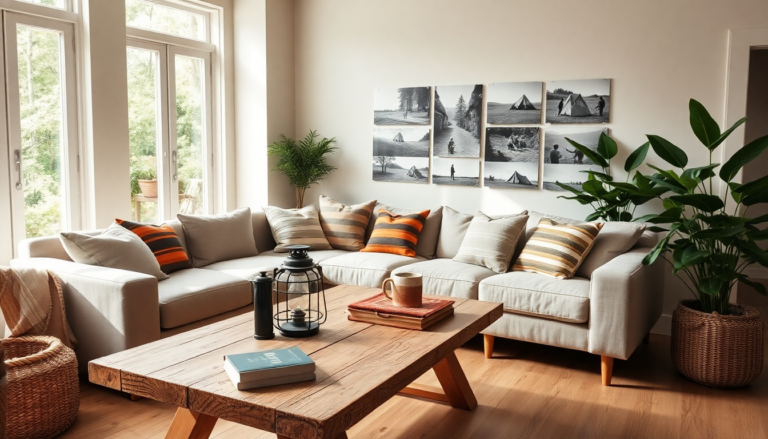Argomenti trattati
As the world of interior design continues to evolve, one trend that keeps capturing our hearts is the nostalgic charm of **summer camp aesthetics**. Remember those carefree summers spent in nature, surrounded by rustic cabins and the warmth of friendship? For many of us, this aesthetic isn’t just about looking back; it’s about crafting a space that feels grounded, inviting, and reminiscent of simpler times. So, how can we bring a touch of that summer camp magic into our homes? Let’s explore the key elements of this trend and share some practical tips to help you do just that.
The Essence of Summer Camp Aesthetics
The summer camp aesthetic resonates across generations. It conjures up images of wood-clad cabins nestled among towering trees, vibrant campfire gatherings, and the simple joys of outdoor adventures. But it’s more than just a style; it’s a cultural touchstone that connects us to our youth. Designers like Max Humphrey point out that nostalgia, simplicity, and natural elements make this style so appealing. The philosophy behind summer camp aesthetics encourages us to use natural materials, earthy color palettes, and personal memorabilia that spark joy and conversation.
So, how do you capture this essence in your own home? Start with the materials. Think wood, stone, and textiles inspired by the great outdoors. Leanne Ford emphasizes layering textures and colors to create a warm, inviting environment. Imagine a cozy retreat adorned with muted earthy tones like forest greens and rustic browns—these hues can set the stage for a tranquil space that mirrors the beauty of nature.
Practical Steps to Create a Camp-Inspired Space
Bringing a summer camp vibe into your home can be a delightful journey. Begin by viewing your space through a natural lens. What elements can you borrow from your surroundings? Consider incorporating branches, stones, or even floral arrangements. Ford suggests foraging in your backyard or a nearby park to gather natural decor items. Picture using beautiful rocks as centerpieces or creatively arranging branches in vases to invite the outdoors in.
When it comes to larger renovations, think about finishes that evoke the natural world. Using limewash for walls or river rocks for a fireplace can instantly transform a room into a nature-inspired sanctuary. The key is balancing rustic charm with functional design. Don’t forget about textiles—plaid or gingham patterns can enhance that nostalgic feel while adding comfort and warmth.
Incorporating Vintage Elements and Personal Touches
No summer camp decor is complete without a sprinkle of nostalgia through vintage pieces. Krista Stokes notes that antiques and vintage finds bring authenticity and a sense of history to any space. Whether it’s treasures from flea markets or cherished family heirlooms, these items can spark conversations and connect us to fond memories. Why not display photographs from past summer camps or vintage camping gear as art? This could create a personal narrative that enriches your decor.
Moreover, layering decorative items that tell a story—like well-loved camp blankets, retro coolers, and hand-crafted pottery—adds character to your design. Ford emphasizes the importance of mixing materials like wood, brass, and textiles to achieve that cozy, lived-in feel. Ultimately, the goal is to create a space that feels nostalgic yet inviting.
Key Performance Indicators for Camp-Inspired Decor
As you embark on creating your summer camp-inspired space, it’s vital to keep an eye on the emotional impact and functionality of your design choices. Consider asking yourself some key performance indicators (KPIs). How often do you find yourself using certain areas of your home for relaxation or gatherings? Are you feeling more connected to nature? Do your decor choices encourage get-togethers with friends and family? Reflecting on these questions can guide your design journey and help you refine your approach.
Ultimately, the summer camp aesthetic is about much more than just looks; it’s about crafting a space that resonates with your personal history and values. By thoughtfully integrating natural materials, vintage elements, and personal touches, you can cultivate an environment that’s both nostalgic and functional—a place where memories are made and shared.

